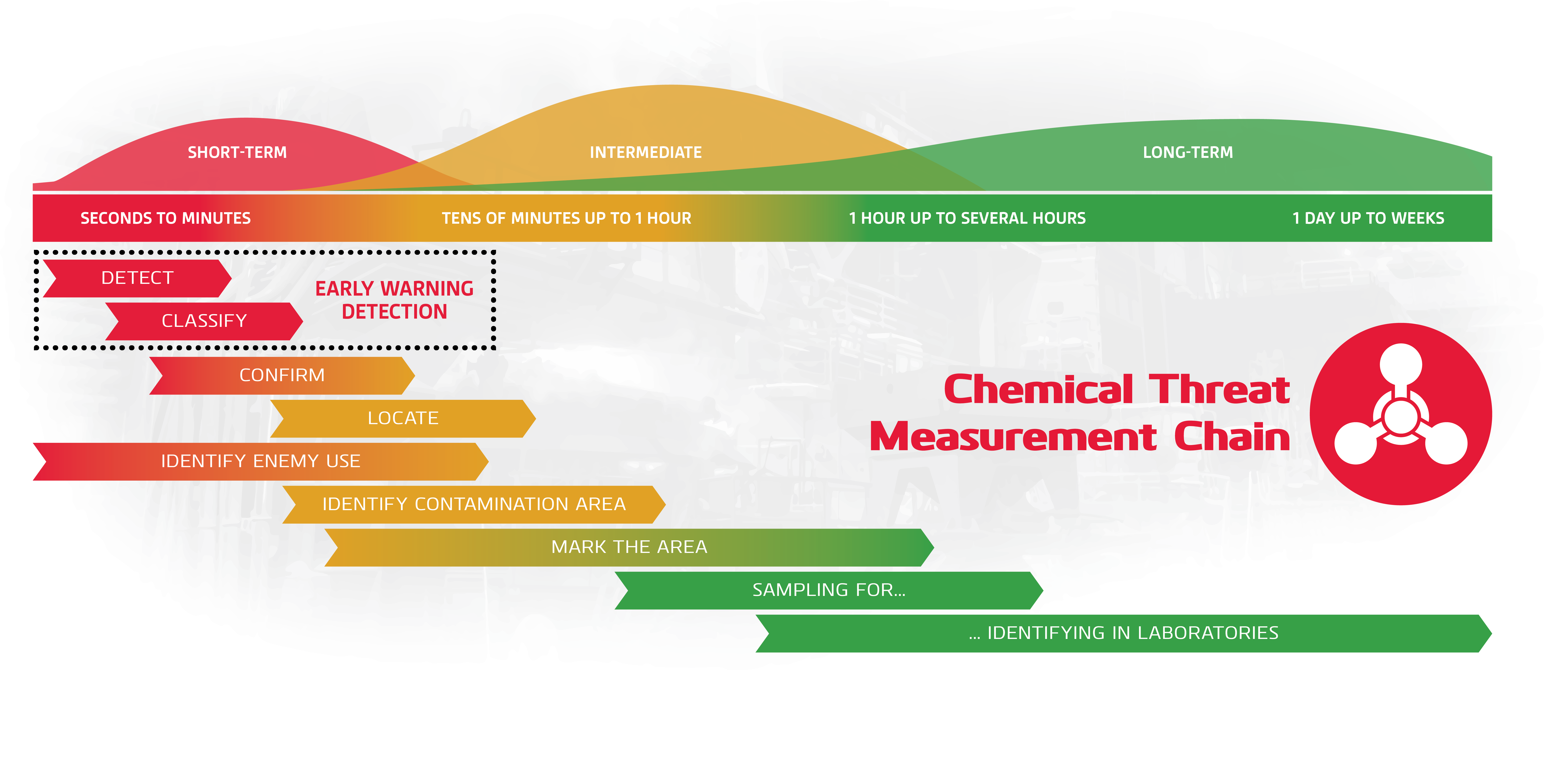White Paper Introduction
For over 100 years, all units have approached the CBRN problem in a similar manner, by avoiding the threat, protecting against it, and decontaminating from it.
These simple actions still provide a linear approach to detect existing hazards and offer a bypass of CBRN obstacles, enabling the safe passage of units.
This white paper opens the challenges, requirements, and procedures of early-warning chemical detection, mostly from a military perspective.
Challenging CBRN Operation Environment
The use of CBRN agents can be integrated in hybrid and asymmetric fighting through proxy forces and near-peer adversaries and threats, influencing to operational environments and civil population. CBRN threats increase sustainment requirements and degraded combat power. State and non-state actors continue to develop CBRN agents’ programs to gain advantage against us and our allies. Industrial facilities have the potential risk of causing exposure to agents or toxic industrial materials by accident, leaks or by attack.
CBRN agents can be used to disrupt, isolate, block, defeat and degrade friendly forces. Dense urban areas and subterranean environments increase the challenges, not forgetting the post effects of a strike, collateral damages, and mass casualties.
Early Warning: Detect to Warn!
The definition of early warning chemical detection covers a detector/system that provides advance notice of a chemical concentration rising above a preset detection limit, triggering an early warning alarm and concentration monitoring. In summary, “early warning” is synonym of “chemical detection”.

The position of Early Warning Chemical Detection in the timeline of actions sequence during a chemical incident based on Military Components of CBRN Management.
Early warning is used when the detection concerns chemical vapours and gases. The decision to warn is based on the assumption that there is a threat present, and it may, or not, move towards the warned units’ locations.
Early warning detection is conducted by field-proven chemical detectors with potential threat-based detection performance to gain time to warn the unit, and time to start protection procedures. Chemical detection requirements are resourced, for example, by actors trained to operate chemical detection systems.
Operation and decision levels have different requirements, needs, and use for early-warning detection.
At the tactical level it is “detect to warn”. At operational level it is “detect to treat” for postexposure medical countermeasures and treatments. The operational level needs also positive identification and forensics identification. This higher level requires support from low-density, highly trained, and specialised units. In other words: more time, higher-level tools, and logistics support.

Leave a Reply